Are you ready for a brief history lesson in rice cup measuring? Sounds exciting doesn’t it!
Firstly, a measuring cup of rice does not correlate with a measuring cup we use in western cooking where 1 cup equates to around 250ml.
The gō or cup is a traditional Japanese unit based on the ge which is equal to 10 shaku or 1⁄10 shō. Back in the year 1891 it was officially equated with 2401/13310 liters. The gō is the traditional amount used for a serving of rice and a cup of sake in Japanese cuisine. Although the gō is no longer used as an official unit, 1-gō measuring cups or their 180ml metric equivalents are often included with modern premium rice cookers.

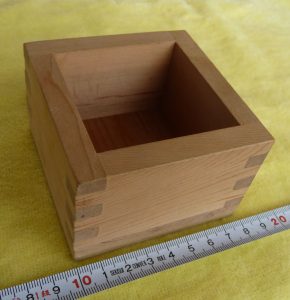
In dining, a 1-gō serving is sometimes equated with 150g of Japanese short-grain rice. It also appears as a serving size for fugu and other fish. Since sake bottles are typically either 720 or 750ml, they can be reckoned as holding about four cups.
| 1 gō | ≈ | 180 | milliliters |
| ≈ | 6.35 | imperial fluid ounces | |
| ≈ | 6.10 | US fluid ounces | |
| ≈ | 3⁄4 | metric cup |
The gō (合) also has some origins in China (Chinese: 合; pinyin: gě). One gō (合) is 180 ml, or approximately 25% smaller than the American measuring cup of 8 (US) fluid ounces/240ml, and is regarded as producing enough cooked rice for a single meal for one person.
In Korea, the hob (South Korea) or hop (North Korea) is a traditional Korean unit based on the ge or gō which is equal to 1⁄10 doe (SK) or toe (NK). Its exact value has varied over time with the size of the doe.
Volume rather than weight of the rice is the preferred method when measuring rice. Why? This is because all rice does not weigh the same and when cooking rice it is important to be exact for rice cooking perfection! The weight varies depending on the grain type and the moisture in the grains. This means for example that a full measuring cup of white Jasmine rice may weigh very differently to a full cup of brown rice and so on. The weight can also vary between rice batch depending on how old or new the crop is.
Keeping up? Okay almost there. So this is where we arrive at modern premium rice cooker measuring cups having a capacity of 180ml. The scale on these measuring cups goes up to 160ml but are actually 180ml. How is this? you may ask. This is because you are supposed to fill the cup to the top (brim) with rice and level it off with chopsticks or a knife to get the full 180ml measurement.
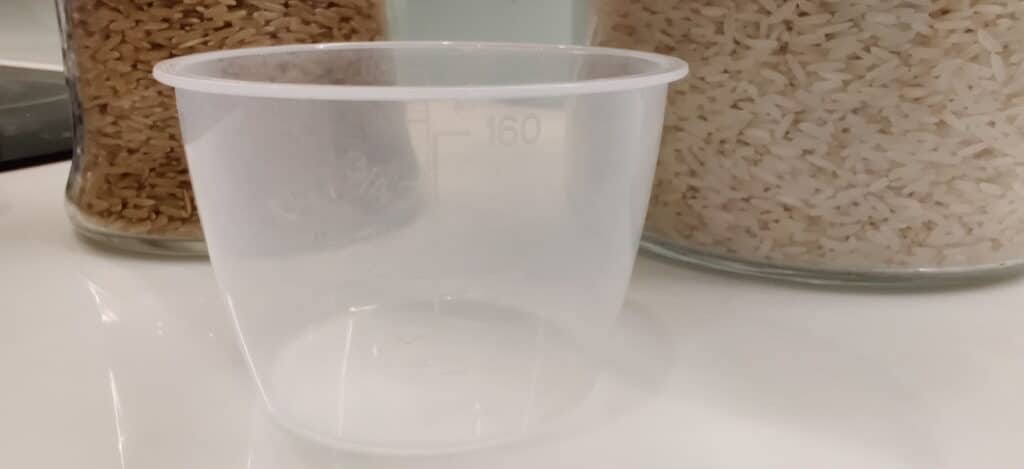
Levelling off to get the 180ml
Using a normal cookery measuring cup instead of a rice measuring cup is a common issue. Also, wrongly thinking that because the scale only goes to 160ml the cup is undersized is often a cause for problems. Remember to level off to get the 180ml proper rice cup size.
Rice measuring cups may look slightly different with varying colours, shapes and markings but they are all usually of this standard size with levelling of to the top as being the accurate way to get the right rice volume. So when you fill with rice to get a full 180ml measuring cup. Don’t forget to go right to the brim and then level off the rice.
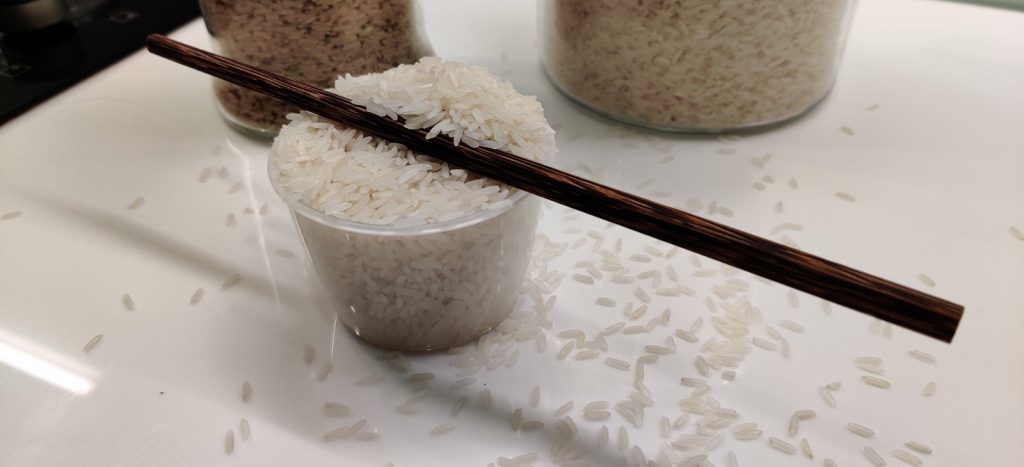
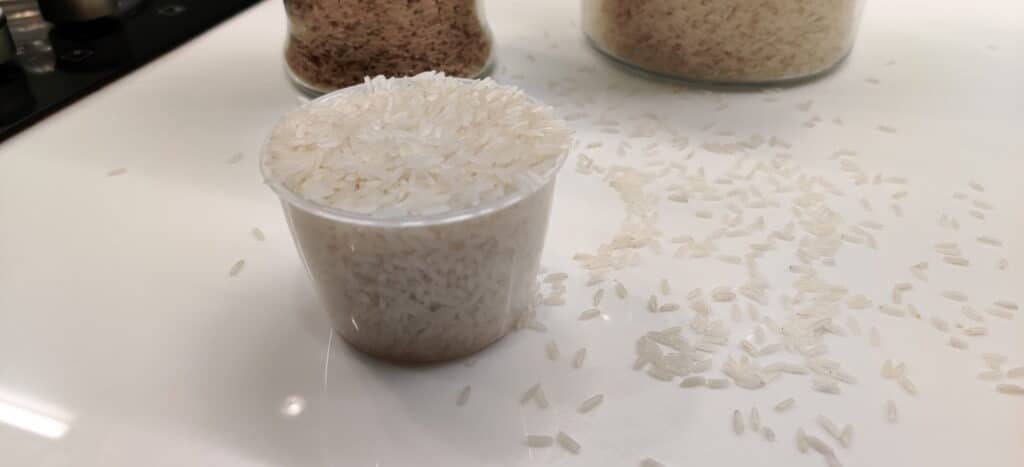
Any questions you can contact us at hello@greedy-panda.com or for a more rapid response try hello@yum-asia.com






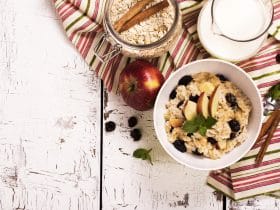

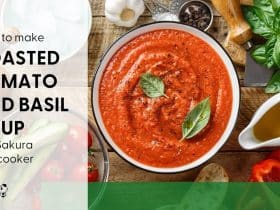
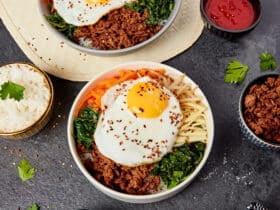
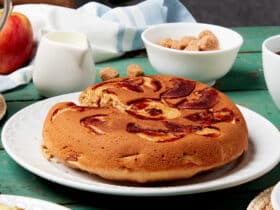
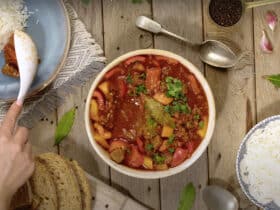
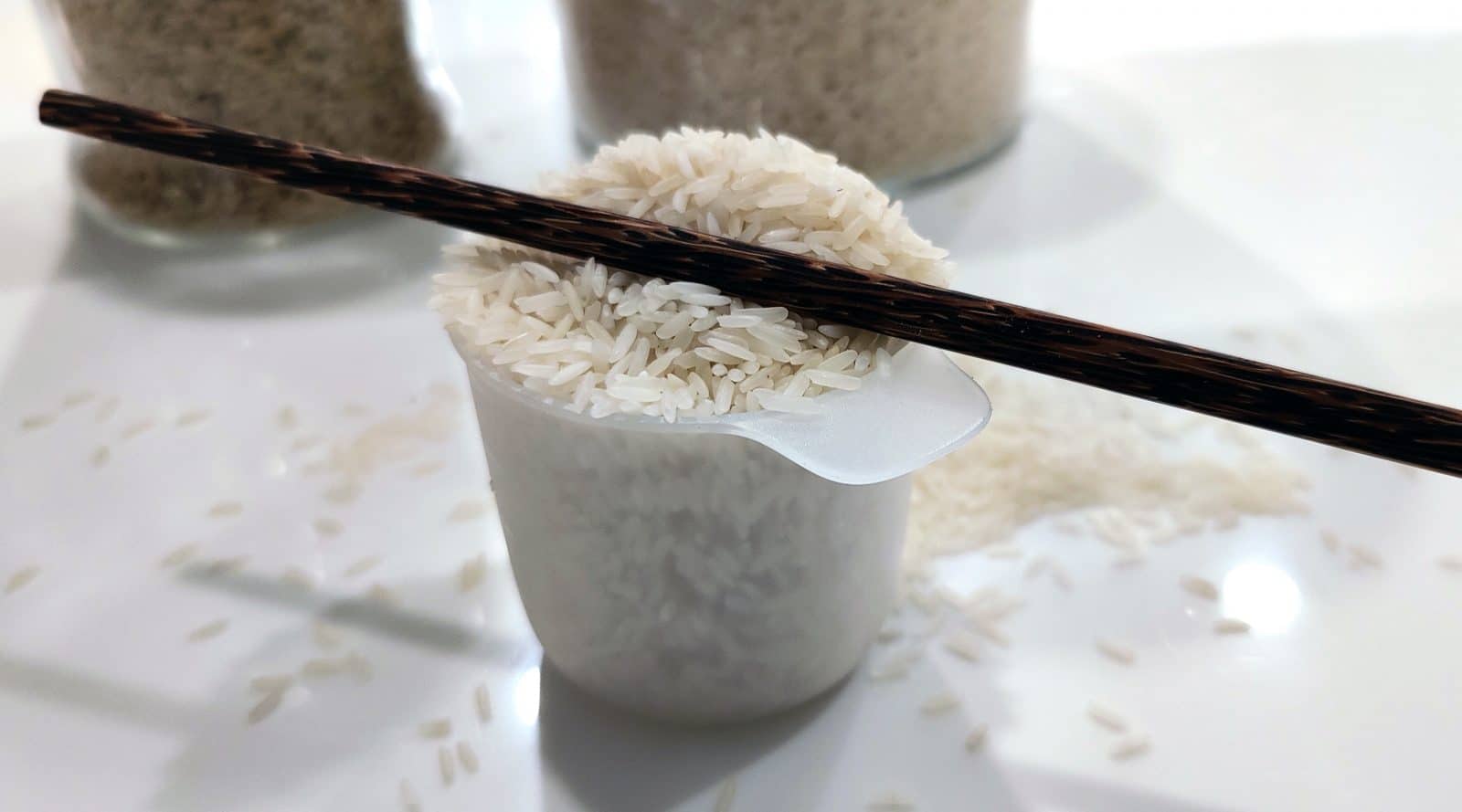

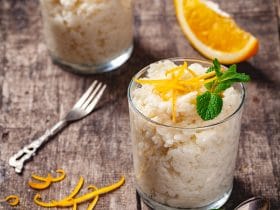
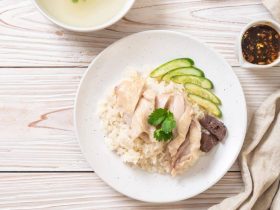
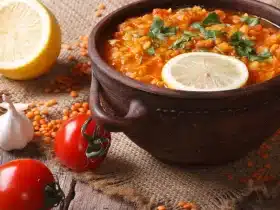

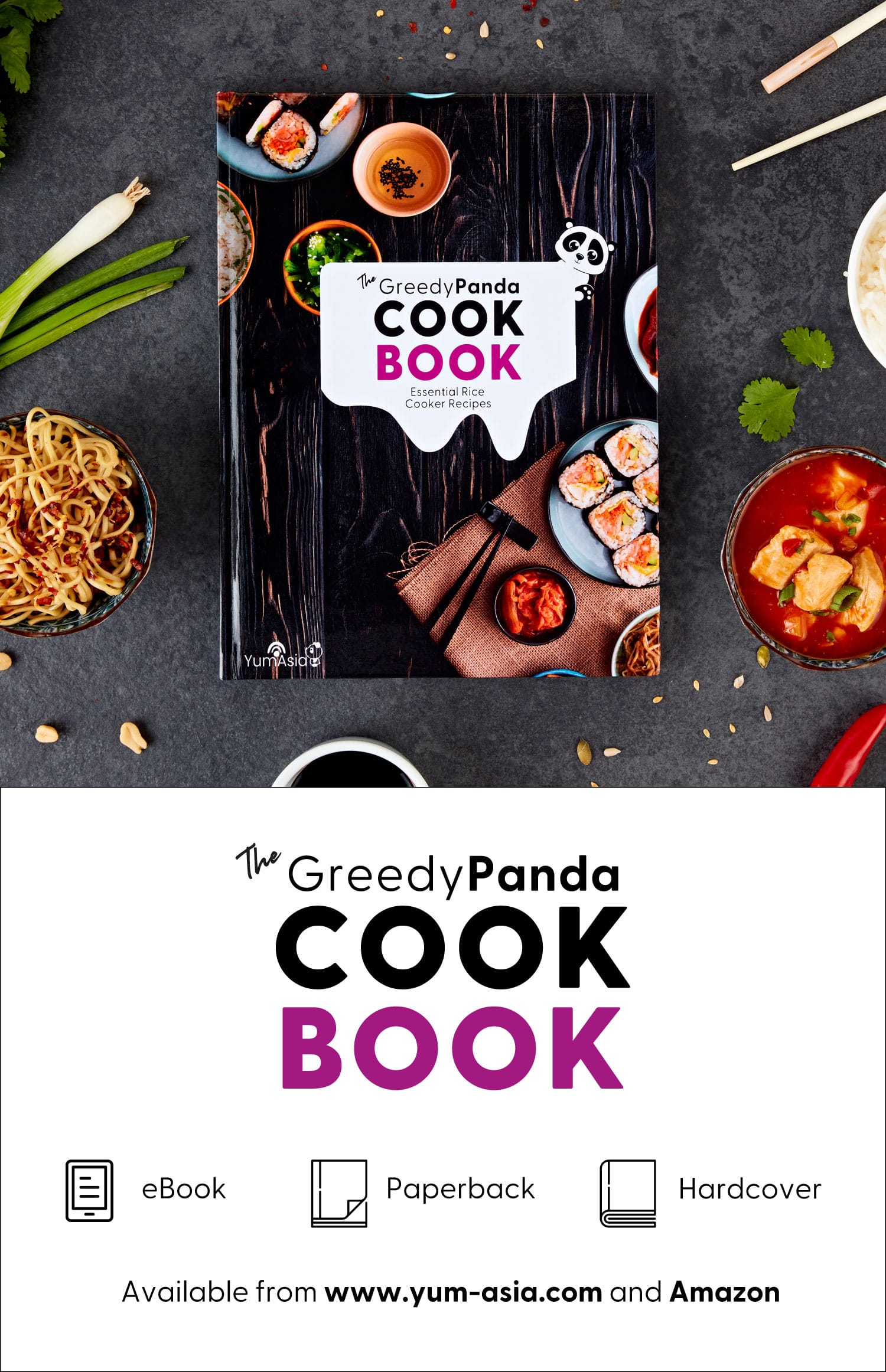
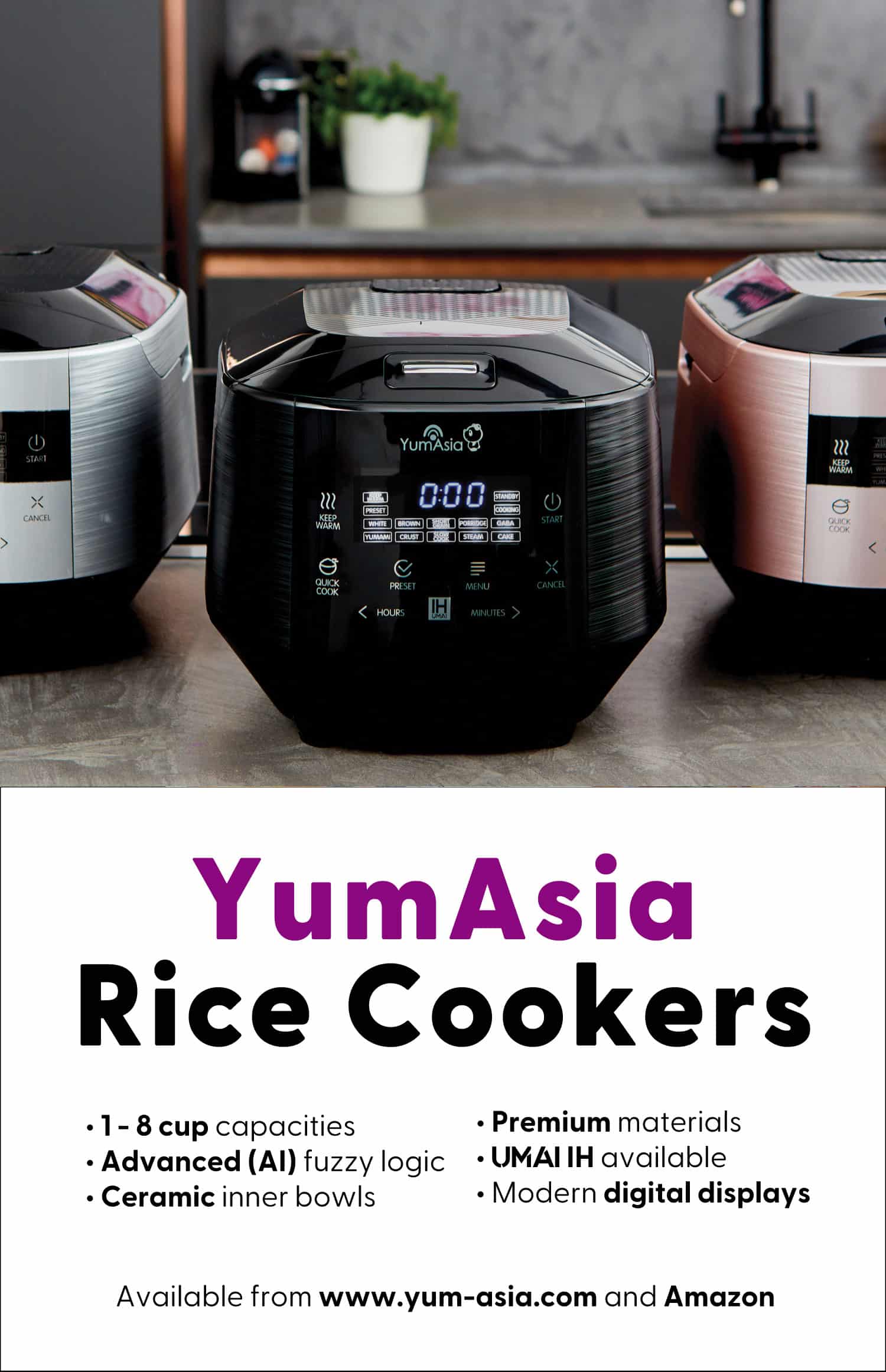
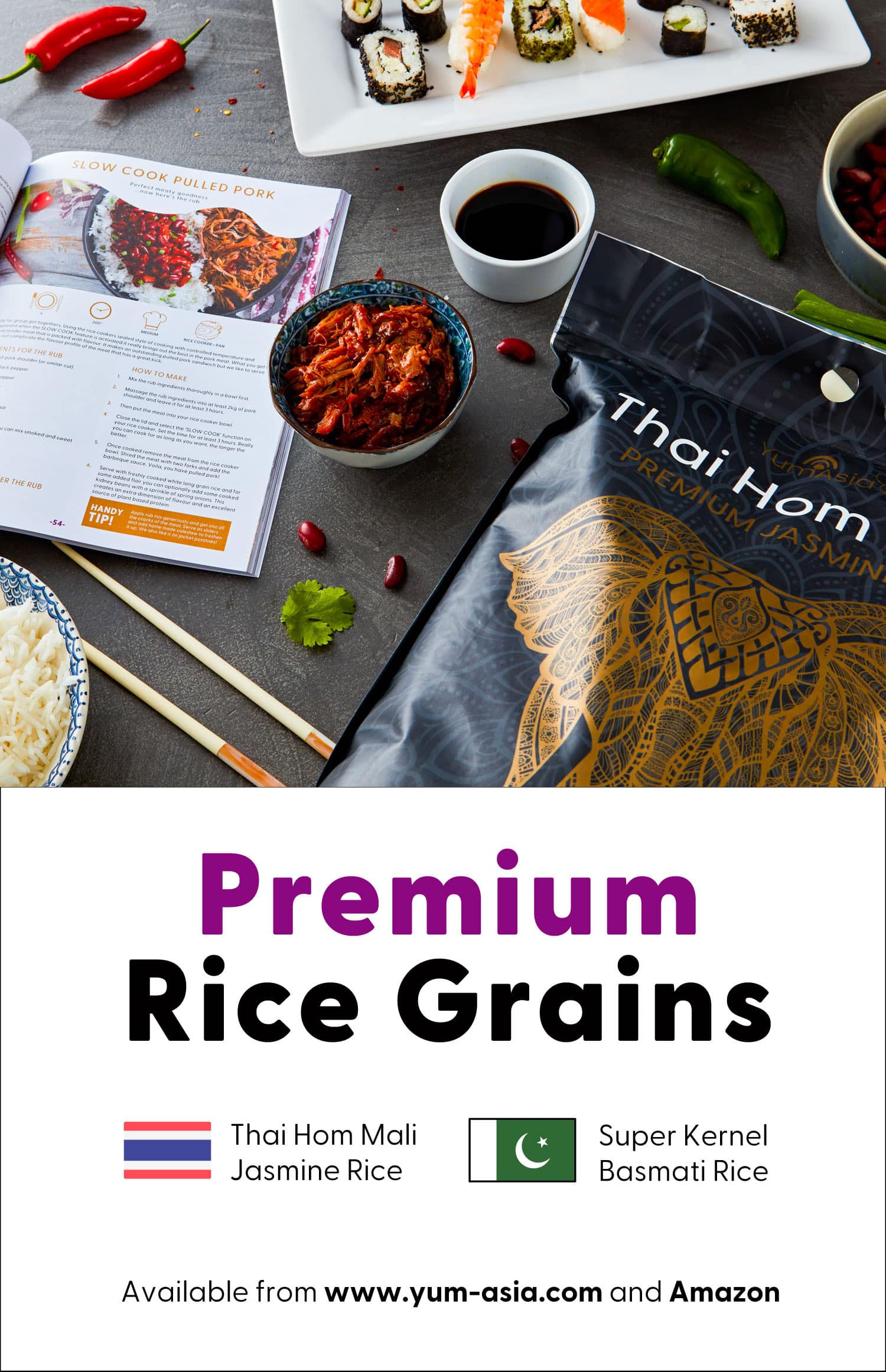
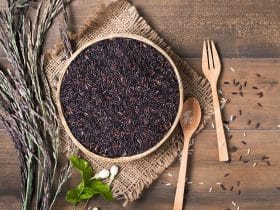
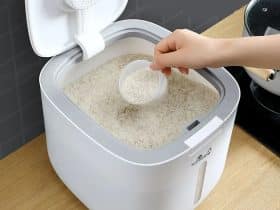
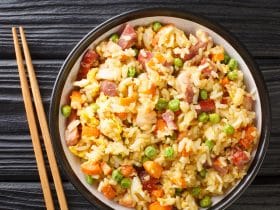
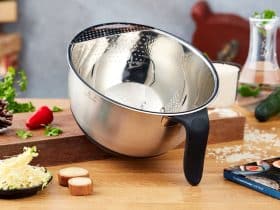

Thank you for this thorough article, as I have been working through understanding this concept. I have been using rice cookers for 30 years and recently switched to the instant pot for some (not all of the time). This article was extremely informative, helpful and allowed me to figure out everything I needed to better understand the differences and how best to apply them.
This article is right; as long as the ratios are correct, doesn’t matter except… when cooking in a rice cooker, you need to use the provided cup or use the inner levels for rice/water ratio because the rice cooker needs to make the right calculation to provide the best rice. Whatever you use to measure the rice, measure the water with the same cup.
So…
In the rice cooker… use the provided cup.
Outside the rice cooker – use a standard cup
And as far as calories go… most packaging and calorie counting apps is based on a regular cup (not the rice cooker cup). This has been my issue all along, too. Basmati Rice, for example is between 600-640 calories uncooked per cup.
So per this article, we can assume that one rice cooker cup is about 75% of a regular measuring cup, so the calories for rice cooker would be 450 to 480
Hi Lee,
Thank you for the nice reply and additional information. Please note however that instapot / instant pot is not actually a rice cooker but instead tries to be a multicooker / pressure cooker jack of all trades, master of few. In this respect it simply boils rice (similar to a pan) rather than used phased cooking (steam, braise, boil, rest) which advanced fuzzy logic rice cookers uses. Note also that pressure cooking is not ideal for rice cooking as the grains are very delicate and can easily be leeched of flavour, texture and consistency. Getting the balance in cooking correct is really quite an art form, especially if following the traditional Kamado style which takes time and care. As you rightly pointed out, being precise with the filling of the measuring cup in this regard is as crucial as the cooking of the rice itself – a good reason why we wrote this article. Thank you again and happy rice cooking!
I don’t want to “find out” I want the EASY answer because I am making rice NOW and I can’t find that stupid little cup.
Why is theee just a chart???
Hi! As detailed in several parts of the user manual and on this article, rice cooker measuring cups are 180ml and this is the measurement you should use for 1 cup.
Very informative. The question I have is whether you measure the water using the same cup or if you measure the water using a standard 8 ounce cup of water.
Hi, if you have a rice cooker with marks on the bowl, then you follow these marks. If not, you use the same cup for rice and water because the volume needs to be the same.
I believe that my question will be quite stupid, because thinking about it there is nothing to change in this regard, however, as it was a detail in the text placed within the Chinese aspect of the unit of measurement (and I want to do traditional Japanese gohan, without running the risk of falling into specific differences that I may not be aware of, which may exist between the two places, China and Japan), I decided to ask my question anyway: Just like in China, the measurement of a 1 gō cup refers to a portion of meals for one person in Japan, is that it? Of course I know that there are those who eat more and those who eat less, but the standard is that if 4 people are going to eat, that 4 cups are made. . Is 1 to 1 (1 person = 1 gō cup, 2 people = 2 gō cups, 3 people =3 gō cups…). Check or is there something wrong with what I said?
Thank u.
Hi, yes, different people eat different amounts but traditionally in both Japan or China 1 cup of rice = 1 person portion.
My problem is myFEEKAA small rice cooker, came with a measuring cup showing top measure as 3/4 mark on top with 80 ml,even with the 3/4 mark. Even if I added a 1/4 to mycup, and came out with a cup, I still would not have the equilivent of 180 cc, for a full cup. My amazon cup has 180 on top of cup. Should I just measure with my cup that says 180? Thank you.
It is very unusual if your rice cooker doesn’t have a 180ml rice measuring cup. In this situation it’s possible that your rice cooker was calibrated with its cooking to the different sized measuring cup it came with. We don’t know this brand so can’t comment much further unfortunately. Maybe you could try a full 180ml measuring cup and see how it works. It should say in your rice cooker instructions how to measure your rice and water amounts.
,greedy panda.com I will take your kind advice and use the 160 mi cup from Amazon. Thank you for your response to my problem, The manual just gives you instructions as to how to operate the rice cooker. I don’t know why they send a buyer, a cup that is technically only a half cup. . Every article says to use the cup that comes with machine. I eould have to fill. The cup twice to get a full cup. Ot do they expect me to consider the cup they sent as to what I use for a recipe? Why would they send me a half cup, and mark it as 3/4 cup? I’m confused. But I will use my Amazon cup, and if it comes out with too much rice for my mini cooker, and I have problems, Amazon will be getting a return of my machine.
Hi, the advice usually is to only use the measuring cup supplied with your rice cooker because this is what the cooking cycles are calibrated to. By not using the supplied cup you could be using the incorrect measurements. The correct people to be directing your questions to are the manufacturers of your rice cooker because only they know how their cookers have been calibrated. We do not know the brand of rice cooker you have and don’t know how they have designed their rice cooker to cook.
Thank you for your very informative article. It speaks volumes about how afraid we have been of loading up on our grains and carbs. Most of us westerners are so used to eating 1/4 to 1/3 US or Metric Cup of dry grains (a mere 45g to 65g) as a typical serving for 1 person’s meal. Perhaps this is why we seek such large amounts of junk food or adopt meat heavy diets, as an attempt of filling our unsatisfied carb requirements.
Funnily enough, this chart reflects this in the 1950s data of the healthy Japanese population where the average 1950 Japanese person was daily consuming 328g of dry rice & 153g of other dry grains, that is 480g of daily dry grains which is almost exactly 1 Go x 3 meals a day. They also had 55g of legumes. (To see the chart, just copy and paste this into google image and it will show it “ Traditional dietary intake of Okinawans and other Japanese circa 1950” )
The Okinawans weren’t eating as much grains (192g + 71g legumes), but they were eating 849g of sweet potatoes, so their carbs were still very similar.
Also note that the average height of a Japanese man in 1950 was only 163cm (yet they were eating “that much food”, and they were all the healthier for it with low rates of disease and living to ages we only hope our modern medical systems can drag us to)
If only we started eating 150g portions of dry grains in our meals again. I myself have recently begun eating 150g portions of my favourite whole grains like Spelt and Brown Rice, and I have seen vast improvements in my overall health and wellbeing.
Hi, sorry but I didn’t understand how to measure the water I need for 1 cup (180).
Ty 🙂
Hi Erika, it depends what rice cooker you have. There should be instructions in your user manual on how to measure the wayer. For example, with Yum Asia rice cookers you use the marks on the bowl for the amount and type of rice you are cooking.
Hi, I have the Panda. On the instructions I foun only the measures for the sticky or glutionous rice 🙂
Hi Erika, there are instructions in both the user manual and on the Speedy Start guide which are supplied with Panda. You use the marks on the inner bowl for the type of rice you are cooking, so for example you are cooking 1 cup of a long grain rice like jasmine or basmati – you use one full to the brim cup of rice, put this in the bowl and then fill with water to the line labelled 1 on the long grain scale.
Hello, I have the Sakura rice cooker. The scales printed on the inside of the bowl have the lower end of 2 cups. How can I properly measure the water needed for 1 cup of rice?
Hi Andrea, as detailed in the instruction manual (page 9, a colour text box), to cook 1 cup of white rice, then you would use the provided cup to measure both the rice and the water (rice full to the brim, then water full to the brim).